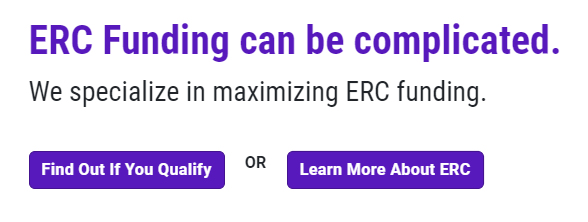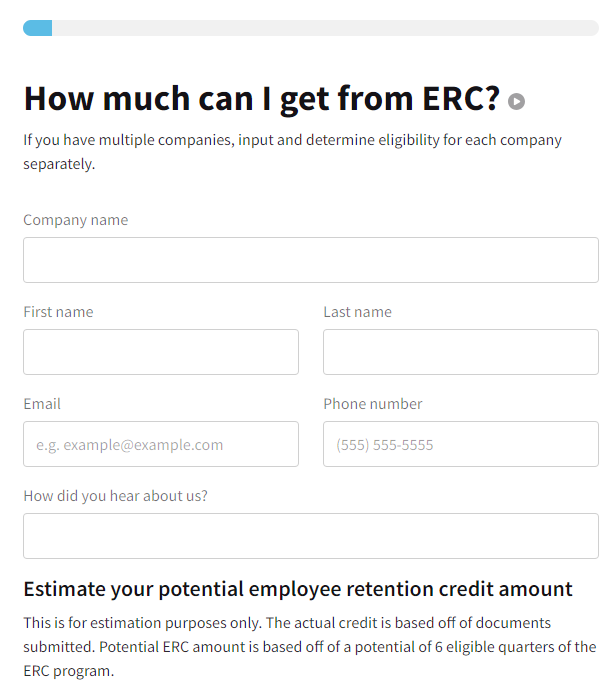Are you looking for ways to retain your valuable employees in 2020? The Employee Retention Credit (ERC) could be the solution you’re seeking. This tax credit is designed to incentivize businesses to keep their workforce intact during these challenging times.
Wondering how it works and who can claim it? Look no further. In this article, we will delve into the details of the ERC, including eligibility requirements and qualifying wages.
Get ready to maximize your benefits and secure a refund sooner than you might think.

What is the Employee Retention Credit 2020?
The Employee Retention Credit (ERC) is a refundable credit that businesses can claim on qualified wages paid to employees. This credit has been subject to various changes and expansions through legislation passed between March 2020 and November 2021. Understanding the evolution of the ERC is crucial for businesses seeking to maximize their benefits.
Under the CARES Act of 2020, eligible employers included those operating a trade, business, or tax-exempt organization. The credit could be taken against the employer’s portion of Social Security tax, allowing for a claim of up to 50 percent of qualified wages paid, with a cap of $10,000 per employee annually for wages paid between March 13 and December 31, 2020.
The Consolidated Appropriations Act of 2021 further expanded eligibility criteria for the ERC. Employers who qualified under this act, including PPP recipients and certain organizations like colleges/universities providing medical care or classified as 501(c)(1), could now claim a credit against 70 percent of qualified wages paid. Additionally, the amount of qualifying wages increased to $10,000 per employee per quarter.
The American Rescue Plan Act of 2021 maintained the same percentage-based calculation as the previous act but limited the maximum credit per employee per quarter to $7,000. However, Recovery Startup Businesses had extended eligibility until the end of 2021 and could claim up to $50,000 for the third and fourth quarters.
These legislative changes have significantly impacted how businesses can benefit from the Employee Retention Credit. It is essential for employers to stay informed about these updates in order to accurately determine their eligibility and maximize their potential credits while complying with all relevant regulations.
How Does the Employee Retention Credit Work for 2020?
To understand how the ERTC works, you need to know that it is a refundable tax credit based on payroll taxes paid by your business. The credit itself has not changed, but there have been some changes in how it is claimed.
The American Rescue Plan Act stipulated that the nonrefundable pieces of the credit would be claimed against Medicare taxes instead of Social Security taxes as they were in 2020. However, this change will only apply to wages paid after June 30, 2021 and will not affect the total credit amount.
If the credit exceeds your total liability of either Social Security or Medicare taxes for a particular quarter, any excess will be refunded to you. This means that if you have paid more in payroll taxes than what you owe for those specific quarters, you may be eligible for a refund.
At the end of each quarter, you will need to reconcile the amounts of these credits on your Form 941. This form will help ensure that all calculations are accurate and that you are claiming the correct amount of credit.
If you received a PPP loan and want to retroactively claim the employee retention tax credit for past quarters, you must file Form 941-X for the applicable quarter(s) in which qualified wages were paid. It’s important to note that expenses eligible for PPP forgiveness that were not included in the loan forgiveness application cannot be factored in later on. Therefore, it is crucial to include all eligible expenses on your PPP loan forgiveness application to maximize qualified wages available for ERTC.
Overall, understanding how the ERTC works requires careful attention to detail and adherence to IRS guidelines. By staying informed and accurately reporting your payroll taxes and qualified wages, you can take advantage of this valuable tax credit opportunity.

Employee Retention Credit Eligibility: Who Can Claim for 2020?
To understand the qualifications for employers to claim the Employee Retention Credit (ERC), it is essential to review the eligibility criteria set forth by the IRS.
These qualifications include meeting specific revenue decline thresholds, having operations either partially or fully suspended due to government-mandated COVID-19 restrictions, or experiencing a significant decline in gross receipts.
Additionally, employers must carefully document their eligibility and maintain accurate records to support their claim for the ERC.
ERC Qualifications for Employers
If you’re a business owner or employer impacted by government orders, such as a full or partial suspension of operations or reduced business hours, you may be eligible for the employee retention credit. This credit is designed to provide financial relief to businesses that have experienced significant disruptions due to these government mandates.
Additionally, if your company has seen a substantial decline in gross receipts, you may also qualify for this credit. It’s important to explore all available options for financial assistance during these challenging times and understand how the employee retention credit can support your recovery efforts as a startup business.
A trade or business that was fully or partially suspended or had to reduce business hours due to a government order.
When your business is fully or partially suspended due to a government order, you may qualify for the employee retention credit.
This credit applies only for the portion of the quarter that your business is suspended, not the entire quarter.
However, certain businesses that are considered essential and able to continue operations through telework may still qualify if they have had their supply of critical material/goods disrupted.
Keep in mind that businesses must meet specific factor tests to determine eligibility for this credit.
An employer that has a significant decline in gross receipts.
You may qualify for the Employee Retention Tax Credit (ERTC) if your gross receipts have significantly declined compared to the same quarter in 2019. Under the CARES Act of 2020, eligibility was based on a drop in gross receipts below 50% compared to 2019, with disqualification if gross receipts exceeded 80% in the following quarter.
The Consolidated Appropriations Act of 2021 expanded eligibility to businesses experiencing forced closures or a more than 20% drop in gross receipts.
The American Rescue Plan Act of 2021 introduced the option of using the immediately preceding quarter’s gross receipts for comparison.
Recovery Startup Business
To qualify as a Recovery Startup Business, your trade or business must have begun after Feb. 15, 2020, and your annual gross receipts should not exceed $1 million.
Here are four key points to understand about the Recovery Startup category:
1) You may be entitled to up to $50,000 per quarter in relief funds.
2) The IRS notice clarified that all qualified employee wages can be used for the credit.
3) Eligibility is assessed on a quarterly basis, so you may qualify in one quarter but not another.
4) The Infrastructure Investment and Jobs Act removes certain eligibility conditions for Recovery Startups.
What wages qualify when calculating the ERC 2020?
Remember, only wages that have been paid after March 12, 2020 and qualify for the credit if paid through Sept. 30, 2021 (Dec. 31, 2021 for Recovery Startup Businesses) can be included when calculating the employee retention tax credit. This means that any wages or compensation subject to FICA taxes, as well as qualified health expenses, can be considered. However, it’s important to note that the credit cannot be taken on wages that are forgiven or expected to be forgiven under the Paycheck Protection Program (PPP).
When determining the qualified health expenses, the IRS provides various methods of calculation depending on specific circumstances. Generally, these expenses include both the employer and employee pretax portion and do not include any after-tax amounts.
To determine which wages qualify for inclusion in the employee retention tax credit calculation, employers must first determine the number of full-time employees. The definition of a full-time employee for this purpose is someone who worked at least 30 hours per week or 130 hours in a month during any calendar month in 2019. This definition is based on both the ACA’s employer shared responsibility provision and the monthly equivalent of working 30 hours per week.
It is important to understand that while there may be similarities between full-time equivalent (FTE) calculations used for PPP loan forgiveness reporting and those used for the employee retention credit, they are not identical. Therefore, accounting professionals should not provide clients with PPP Forgiveness FTE information when determining eligibility for this tax credit.
How Soon Can Eligible Businesses See an ERC Refund?
Now that you understand which wages qualify when calculating the Employee Retention Credit (ERC), let’s talk about how soon eligible businesses can expect to see a refund. It’s important to note that while Paychex can assist with checking eligibility and processing amended tax returns, it’s ultimately the IRS that reviews and approves the submissions.
Here are four key points to keep in mind regarding the timing of ERC refunds:
- Processing Time: Generally, it takes around six months for businesses to receive their ERC refund from the IRS. This timeframe includes the review and approval process.
- Larger Refunds: If your business is eligible for a larger ERC refund, it might require additional review by IRS auditors. This extra scrutiny adds more time before you’ll see the funds in your account.
- IRS Review: Remember that it’s the IRS who determines if a business qualifies for the credit and decides on the amount of refund. Their thorough review process ensures compliance with all regulations and guidelines.
- Patience is Key: While waiting for your ERC refund may feel frustrating, it’s essential to be patient during this time. The IRS handles a significant number of requests and reviews each one carefully to ensure accuracy.
It’s crucial to stay informed about any updates or changes in legislation regarding ERC refunds, as these can affect processing times as well. Consult with your tax advisor for further guidance on navigating this process smoothly and efficiently.
Conclusion
So now you know all about the Employee Retention Credit for 2020. This valuable tax credit can help eligible businesses retain their employees and navigate through these challenging times.
By understanding how it works, who is eligible to claim it, and what wages qualify, you can take advantage of this opportunity to receive a refund.
Remember, the sooner you apply, the sooner you can see the benefits of the Employee Retention Credit.
Stay informed and make use of this important resource for your business.
